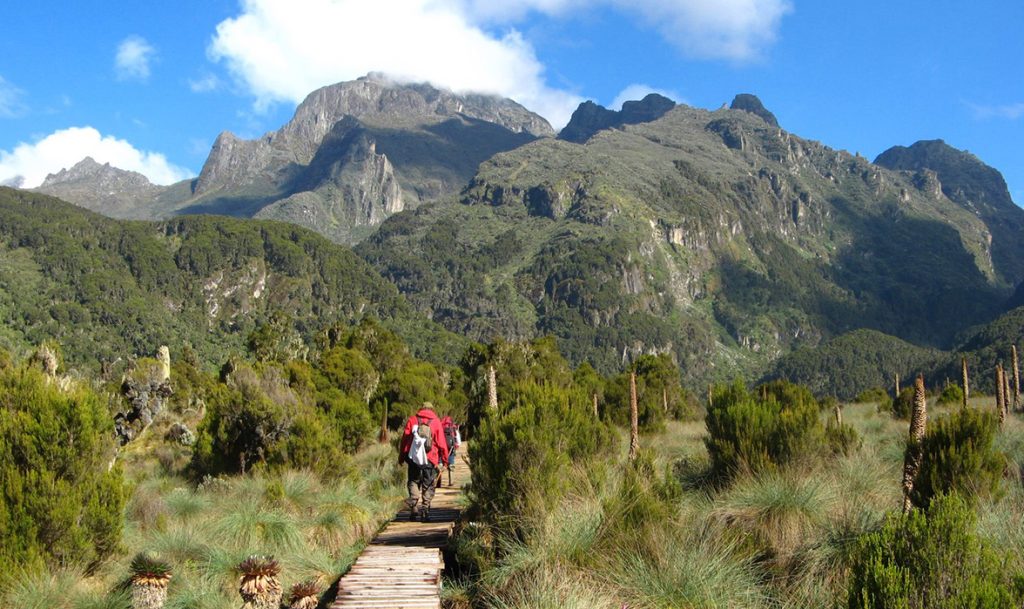Kilimanjaro & Rwenzori Treks: The Ultimate Hiking and Mountaineering Experience
Discover the majestic beauty of some of Africa’s highest peaks with our comprehensive guide of Kilimanjaro Rwenzori to trekking and hiking in the Rwenzori and Kilimanjaro mountains. Whether you’re a seasoned hiker or a beginner, these iconic mountains offer an unforgettable experience that will challenge your limits and reward you with breathtaking views.
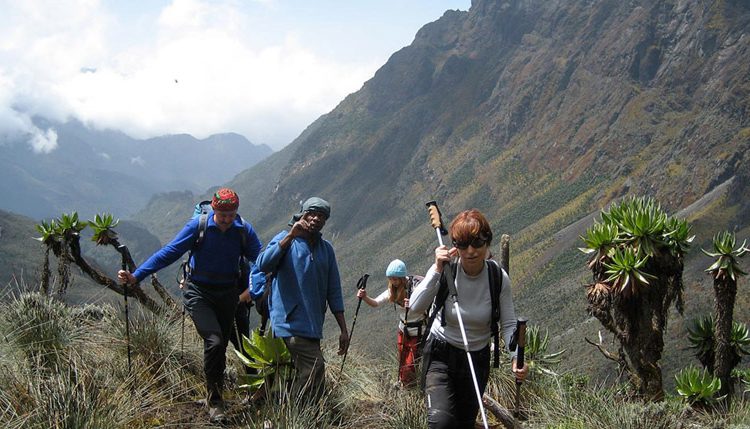
Table of Contents
- What Is Trekking? The Difference Between Hiking and Trekking
- Why Trekking in Rwenzori and Kilimanjaro?
- Best time to visit
- Trekking Routes in Rwenzori Mountains
- Trekking Routes in Kilimanjaro Mountains
- Preparation Tips
- What to Pack
- Accommodations and Services
- Safety Tips
- FAQs
- Conclusion
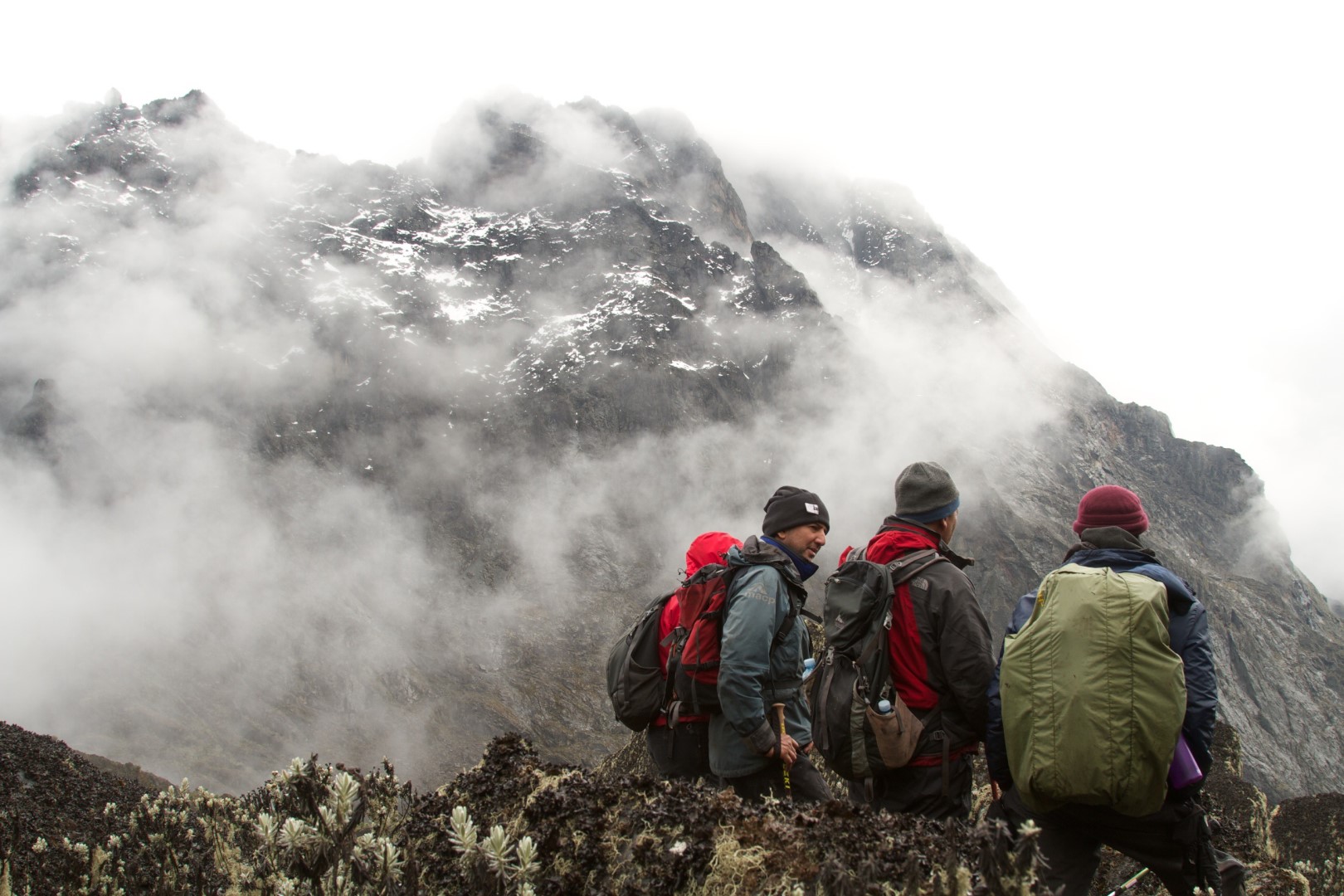
Gear
- Layering is essential for the Rwenzori Mountains; pack moisture-wicking base layers, insulating mid-layers, and waterproof outer layers to adapt to the changing climates.
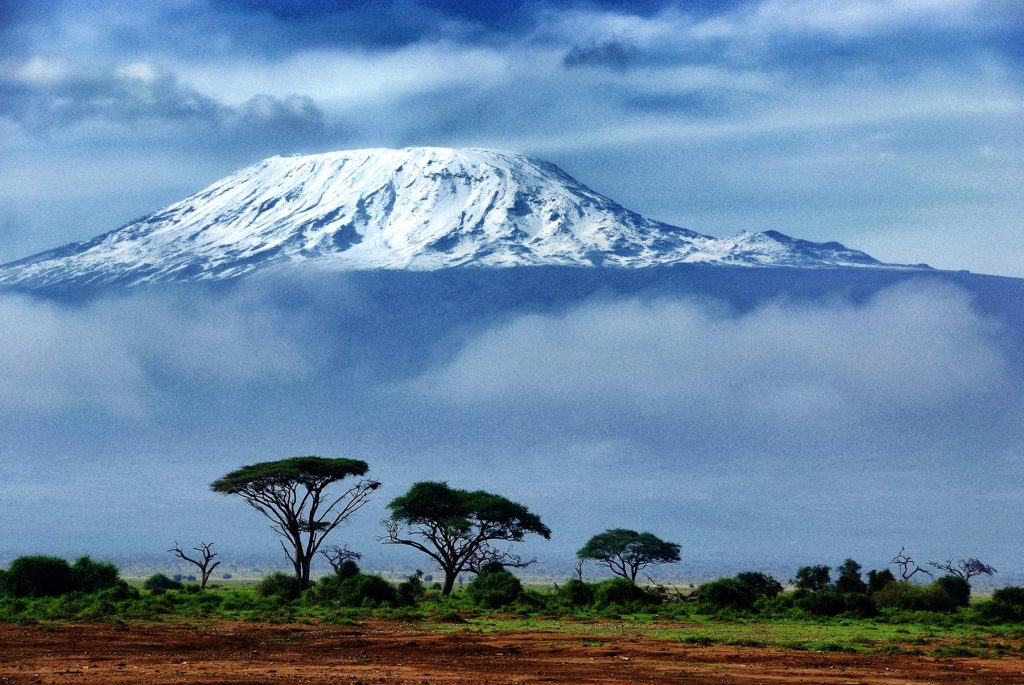
Weather
- Monitor Weather Forecasts: Stay informed about the weather conditions and be prepared for sudden changes, especially near the summit.
Overview of Rwenzori and Kilimanjaro Mountains
Rwenzori Mountains:
Location: The Rwenzori Mountains straddle the border between Uganda and the Democratic Republic of Congo. They are part of the Albertine Rift, a branch of the East African Rift.
Elevation: The range includes Margherita Peak, which stands at 5,109 meters (16,762 feet) and is the third-highest peak in Africa.
Unique Features: Known for their lush vegetation zones, glaciers, and biodiversity, the Rwenzori Mountains are often referred to as the “Mountains of the Moon.” The range is home to various species of plants, birds, and animals, some of which are endemic to the region.
UNESCO World Heritage Site: The Rwenzori Mountains National Park was declared a UNESCO World Heritage Site in 1994 due to its outstanding natural beauty and unique ecosystems.
Mount Kilimanjaro:
Location: Kilimanjaro is located in northeastern Tanzania, near the border with Kenya.
Elevation: Mount Kilimanjaro is the tallest mountain in Africa, rising to 5,895 meters (19,341 feet) at Uhuru Peak, its highest point.
Unique Features: Kilimanjaro is a dormant stratovolcano with three distinct cones: Kibo, Mawenzi, and Shira. The mountain is famous for its diverse climatic zones, from tropical rainforest at the base to arctic conditions at the summit.
Seven Summits: Kilimanjaro is one of the Seven Summits, a group of the highest mountains on each of the seven continents, making it a bucket-list destination for climbers.
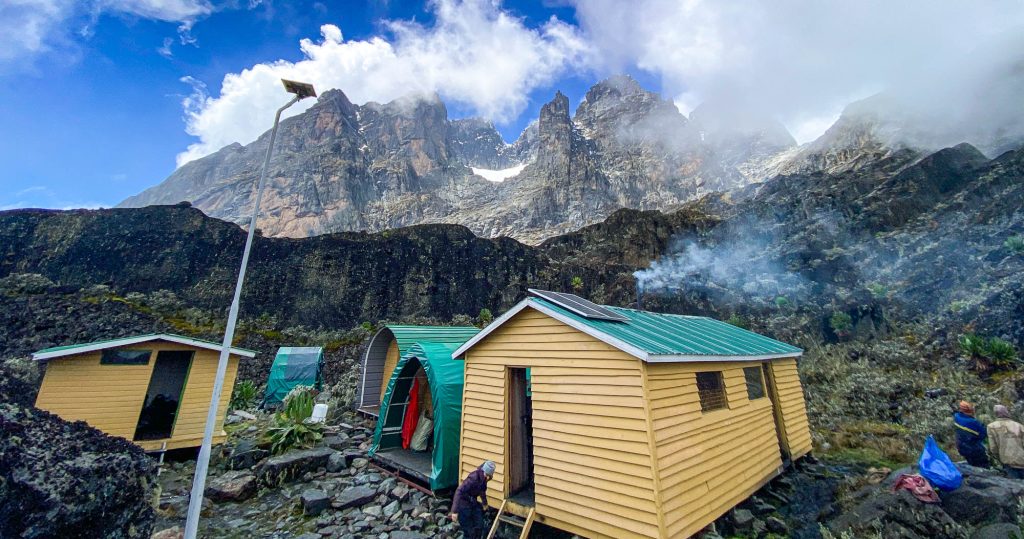
1. What Is Trekking? The Difference Between Hiking and Trekking
Trekking and hiking are two of the most loved outdoor activities, but they cater to different types of adventurers. If you’re new to these terms, you might wonder: What is trekking, and how is it different from hiking? Understanding these differences is crucial for choosing the right adventure that matches your fitness level, time availability, and overall goals.
What Is Trekking?
Trekking is an extended, often multi-day journey on foot through challenging and varied terrains. It’s more than just a long walk—trekking involves navigating remote and rugged landscapes like mountains, forests, and valleys. This activity requires thorough preparation, including packing essential gear such as tents, sleeping bags, and sufficient supplies to last several days. Trekking also demands higher physical and mental endurance, making it ideal for those seeking a more immersive and challenging outdoor experience.
What Is Hiking?
Hiking, on the other hand, is generally a shorter and less demanding activity that is usually completed within a day. It involves walking on well-marked trails, often in nature reserves or parks. Hiking is more accessible to beginners and requires minimal preparation—just a good pair of hiking boots, a daypack, and some water. It’s perfect for those looking to enjoy nature without the intensity of trekking.
Key Differences Between Trekking and Hiking:
- Duration:
- Trekking: Multi-day journeys that can last from a weekend to several weeks.
- Hiking: Typically completed within a few hours or a single day.
- Terrain:
- Trekking: Involves navigating through rough, remote, and often unpredictable terrains.
- Hiking: Done on well-maintained and marked trails.
- Physical Demand:
- Trekking: Requires high physical fitness and mental resilience due to the prolonged and strenuous nature of the activity.
- Hiking: Suitable for a broader range of fitness levels, with varying difficulty depending on the trail.
- Preparation:
- Trekking: Involves extensive planning and packing essential gear for survival in remote areas.
- Hiking: Minimal preparation with basic gear like sturdy shoes and a daypack.
Whether you’re interested in pushing your limits with a trek or enjoying a leisurely hike, knowing the differences between these two activities will help you choose the one that’s right for you.
Why This Matters
Choosing between trekking and hiking depends on your personal goals and experience level. If you’re looking for a deep, immersive journey that challenges your physical and mental limits, trekking is the way to go. However, if you prefer a shorter, more accessible adventure, hiking might be more suitable.
For a comprehensive guide that dives deeper into these distinctions and helps you make an informed choice, explore our full article here.
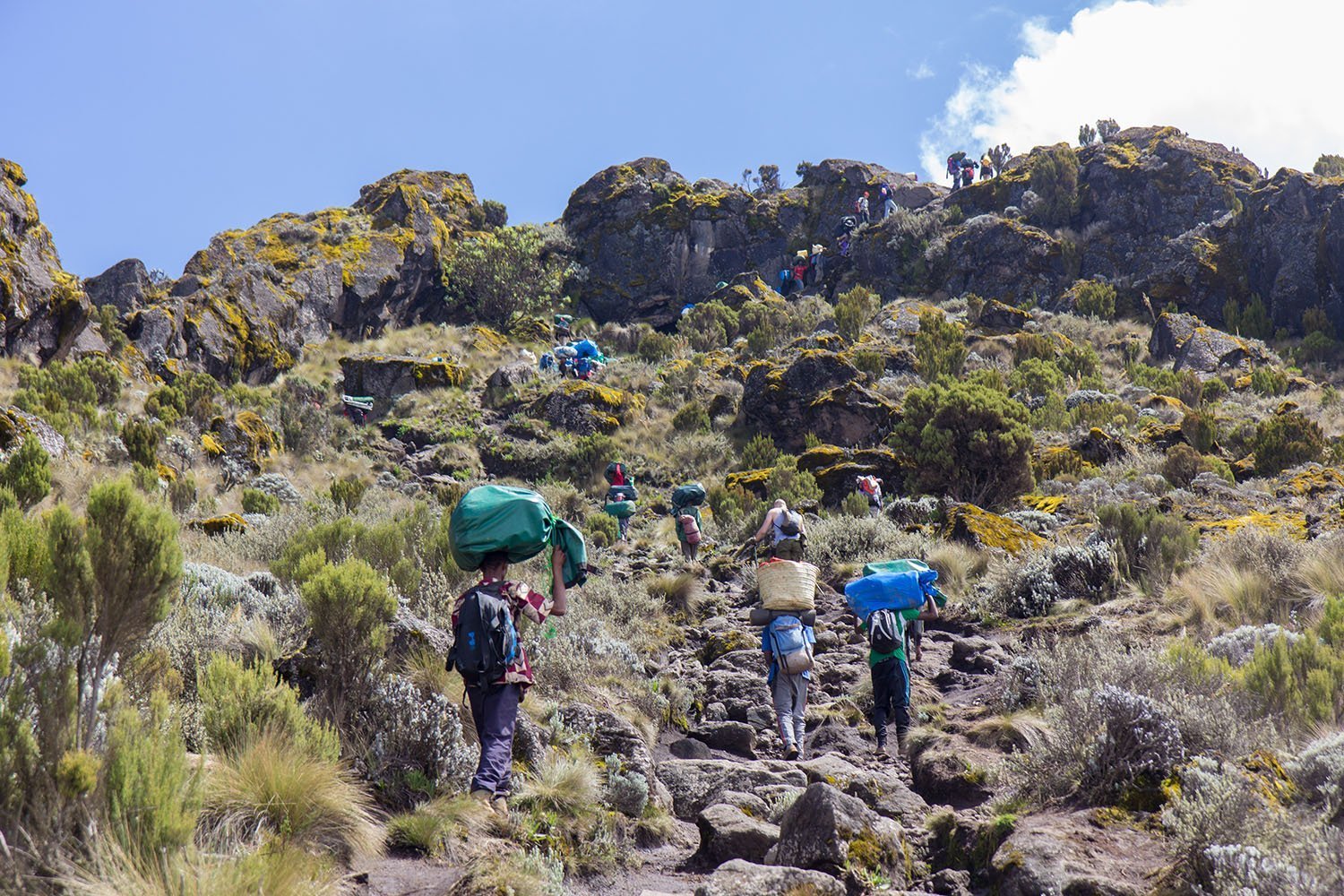
2. Why Trekking in Rwenzori and Kilimanjaro?
Why Choose Rwenzori Mountains:
Off-the-Beaten-Path: The Rwenzori Mountains offer a more secluded and less commercialized trekking experience compared to Kilimanjaro.
Diverse Ecosystems: The mountains are known for their distinct vegetation zones, including montane forests, bamboo forests, and moorlands, leading to alpine zones with glaciers.
Wildlife: Trekkers may encounter unique wildlife, including the Rwenzori colobus monkey, forest elephants, and a variety of bird species.
Cultural Experience: The surrounding areas are inhabited by the Bakonzo people, who offer rich cultural interactions and insights into their way of life.
Why Choose Mount Kilimanjaro:
Iconic Summit: Kilimanjaro is the highest free-standing mountain in the world, making it a highly sought-after summit for trekkers and mountaineers.
Accessibility: Kilimanjaro is one of the most accessible high-altitude mountains in the world, with no technical climbing required, making it suitable for both beginners and experienced hikers.
Variety of Routes: Kilimanjaro offers multiple trekking routes, each with its own level of difficulty, scenery, and duration, providing options for all types of trekkers.
Cultural Encounters: Trekkers can explore the Chagga culture in the surrounding areas, known for their traditional agricultural practices and warm hospitality.
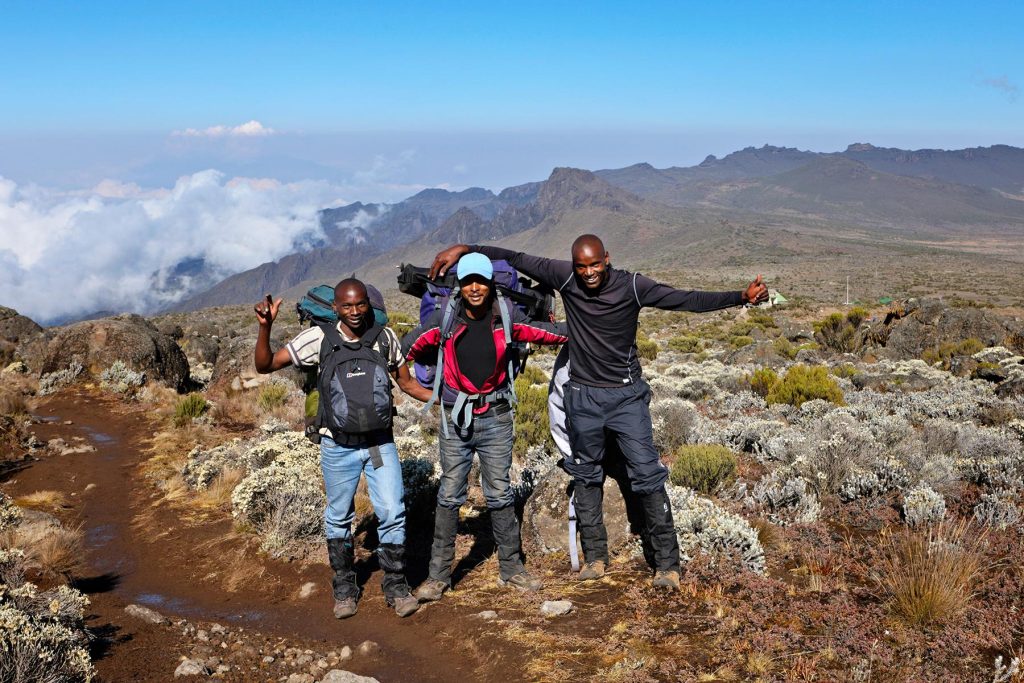
3. Best Time to Visit
Rwenzori Mountains:
- Dry Season (December to February & June to August):
- Pros: Less rainfall, clearer skies, and better trail conditions.
- Cons: Cooler temperatures at higher altitudes, but generally better for trekking.
- What to Expect: This is the best time for trekking as the trails are less muddy, and the chances of seeing the peaks without cloud cover are higher.
- Wet Season (March to May & September to November):
- Pros: Lush vegetation and fewer trekkers.
- Cons: Heavier rains can make trails slippery and challenging, with poor visibility.
- What to Expect: Trekking during the wet season is more challenging due to muddy trails, but it offers a different perspective with vibrant landscapes.
Mount Kilimanjaro:
- Dry Season (January to March & June to October):
- Pros: Stable weather conditions, clear views, and more comfortable trekking conditions.
- Cons: Higher number of trekkers, particularly during the peak months of July to September.
- What to Expect: January to March offers a quieter experience with snow at the summit, while June to October is the most popular period for trekking due to the favorable weather.
- Pros: Stable weather conditions, clear views, and more comfortable trekking conditions.
- Wet Season (April to May & November):
- Pros: Fewer trekkers and lush scenery on the lower slopes.
- Cons: Wet and muddy trails, with a higher risk of rain at lower altitudes.
- What to Expect: While trekking is possible, it’s less popular due to the challenging conditions. However, some routes, like the Rongai Route, may offer drier conditions during this period.
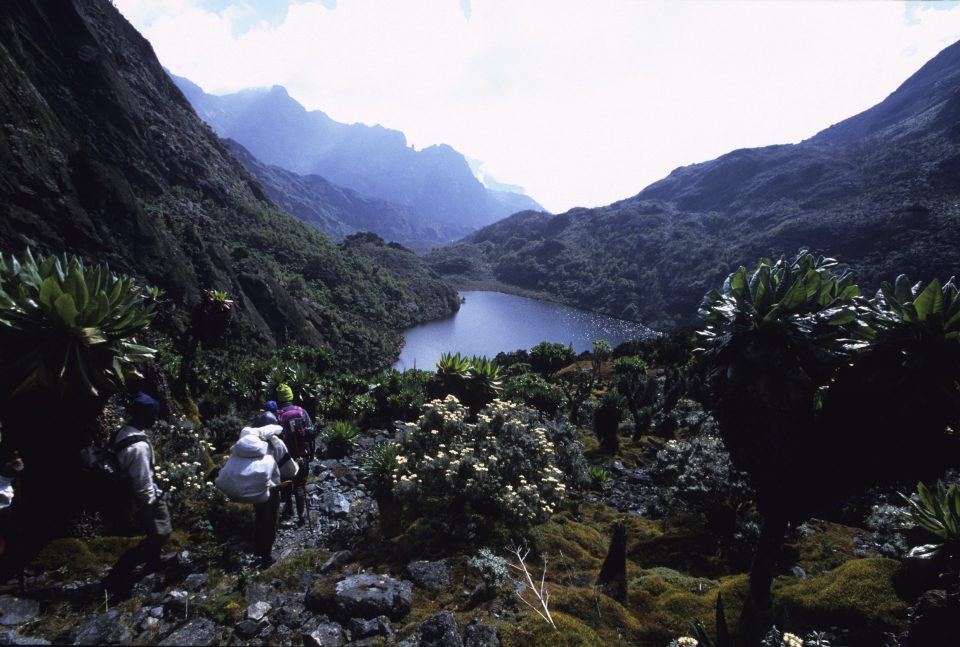
4. Trekking Routes in Rwenzori Mountains
Central Circuit Route:
| Duration: | 7-9 days |
| Difficulty: | Moderate to difficult |
| Highlights: | This is the most popular route, offering the chance to summit Margherita Peak. The route loops around the main peaks of the Rwenzori, providing stunning views of glaciers, lakes, and alpine vegetation. |
| Terrain: | The trek involves steep climbs, boggy sections, and rocky paths, requiring good physical fitness. |
Kilembe Route:
| Duration: | 8-10 days |
| Difficulty: | difficult |
| Highlights: | This is the most popular route, offering the chance to summit Margherita Peak. The route loops around the main peaks of the Rwenzori, providing stunning views of glaciers, lakes, and alpinA more challenging and remote route that offers stunning views of the Rwenzori peaks, valleys, and glaciers. The route starts from Kilembe town and joins the Central Circuit at the higher altitudes |
| Terrain: | This route is more rugged and less traveled, with steep ascents and descents |
Bukurungu Trail:
| Duration: | 7-8 days |
| Difficulty: | Moderate to difficult |
| Highlights: | The Bukurungu Trail is a newer route that offers trekkers a unique perspective of the Rwenzori Mountains. It provides access to remote areas of the park, with chances to see rare wildlife and plant species |
| Terrain: | The trail is varied, with a mix of forest, moorland, and alpine zones, offering a diverse trekking experience |
5. Trekking Routes in Kilimanjaro Mountains
Marangu Route:
| Duration: | 5-6 days |
| Difficulty: | Moderate |
| Highlights: | Known as the “Coca-Cola Route,” this is the only route with hut accommodations. It’s the easiest and most popular route, with a gradual ascent |
| Terrain: | The route offers a steady climb through diverse vegetation zones, from rainforest to alpine desert, with less scenic variety compared to other routes |
Machame Route:
| Duration: | 6-7 days |
| Difficulty: | Moderate to difficult |
| Highlights: | Also known as the “Whiskey Route,” Machame is a scenic route that offers panoramic views and a higher success rate for summiting due to its longer acclimatization period |
| Terrain: | The route is steeper and more challenging than Marangu, with a more varied landscape, including the Shira Plateau and Barranco Wall |
Lemosho Route:
| Duration: | 7-8 days |
| Difficulty: | Moderate to difficult |
| Highlights: | The Lemosho Route is less crowded and offers stunning scenery, including the Shira Plateau and the chance to see wildlife. It’s one of the longest routes, providing excellent acclimatization |
| Terrain: | The trail is varied, with dense forest, moorland, and rocky slopes leading up to the summit |
Rongai Route:
| Duration: | 6-7 days |
| Difficulty: | Moderate |
| Highlights: | The Rongai Route approaches Kilimanjaro from the north, near the Kenyan border. It’s less crowded and offers a drier ascent, with a gradual climb |
| Terrain: | The route passes through remote wilderness areas, with fewer steep sections, making it a good option for less experienced trekkers |
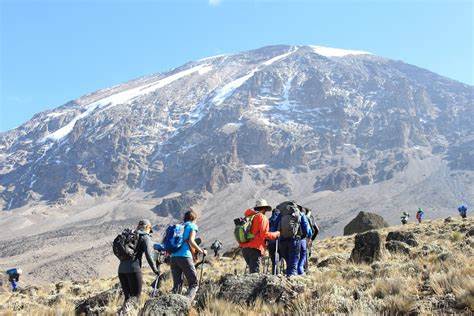
6. Preparation Tips
Physical Fitness:
- Cardio Training: Incorporate activities like running, cycling, or swimming into your routine to build endurance.
- Strength Training: Focus on building leg strength with exercises like squats, lunges, and step-ups. Core exercises like planks and crunches will help with balance and carrying a backpack.
- Hiking Practice: If possible, go on practice hikes with a loaded backpack to simulate trekking conditions.
Acclimatization:
- Climb High, Sleep Low: Wherever possible, follow the principle of ascending to a higher altitude during the day and descending to sleep at a lower altitude.
- Stay Hydrated: Drink plenty of water to help with acclimatization.
- Listen to Your Body: Be aware of the symptoms of altitude sickness, such as headaches, nausea, and dizziness. If symptoms worsen, it’s important to descend.
Permits and Guides:
- Rwenzori Mountains: A permit is required to enter the Rwenzori Mountains National Park. Hiring a licensed guide is mandatory, and porters are highly recommended.
- Mount Kilimanjaro: All trekkers must obtain a permit and be accompanied by a licensed guide. Most treks are organized through tour operators who arrange permits, guides, and porters.
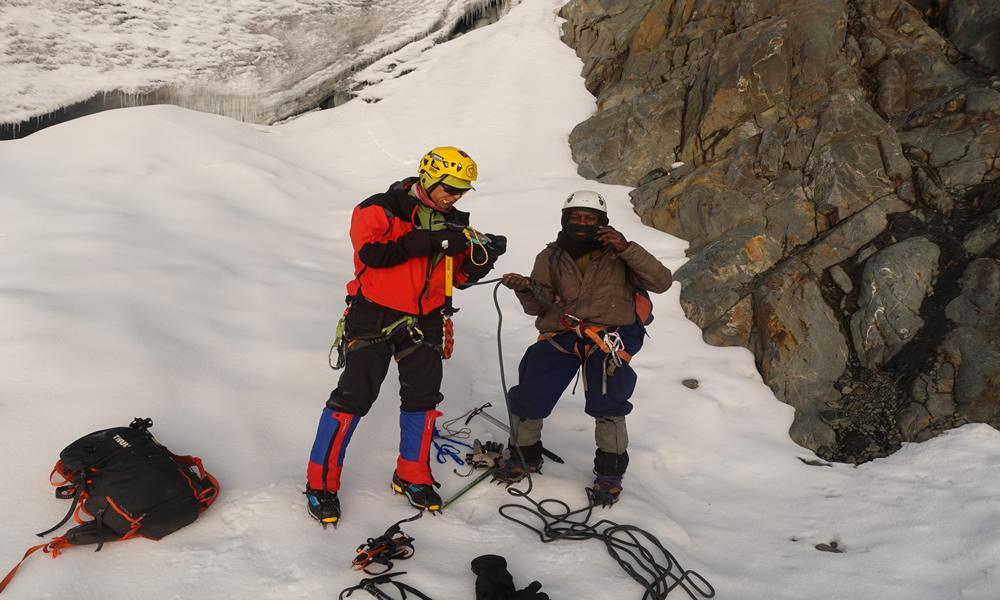
7. What to Pack
Clothing:
- Base Layers: Moisture-wicking base layers (thermal tops and bottoms) to keep you dry.
- Mid Layers: Fleece or soft-shell jackets for insulation. treks are organized through tour operators who arrange permits, guides, and porters.
- Outer Layers: Waterproof and windproof jacket and pants to protect against rain and wind.
- Hiking Boots: Sturdy, waterproof boots with good ankle support.
- Accessories: Warm hat, gloves, and a buff or scarf for cold conditions.
Gear:
- Layering is essential for the Rwenzori Mountains; pack moisture-wicking base layers, insulating mid-layers, and waterproof outer layers to adapt to the changing climates.
- Backpack: A 40-50 liter backpack for carrying your daily essentials. Porters typically carry heavier gear.
- Trekking Poles: Useful for balance and reducing strain on your knees during steep descents..
- Sleeping Bag: A 4-season sleeping bag rated for sub-zero temperatures.
- Headlamp: Essential for early morning summit attempts and camp use.
Other Essentials:
- Water Purification: Tablets or a water filter to ensure safe drinking water.
- First Aid Kit: Include band-aids, blister pads, pain relievers, and any personal medications.
- Sun Protection: Sunglasses, sunscreen, and lip balm with SPF.
- Energy Snacks: High-energy snacks like nuts, energy bars, and dried fruits to keep your energy levels up during the trek.
A detailed Packing list if found on this page
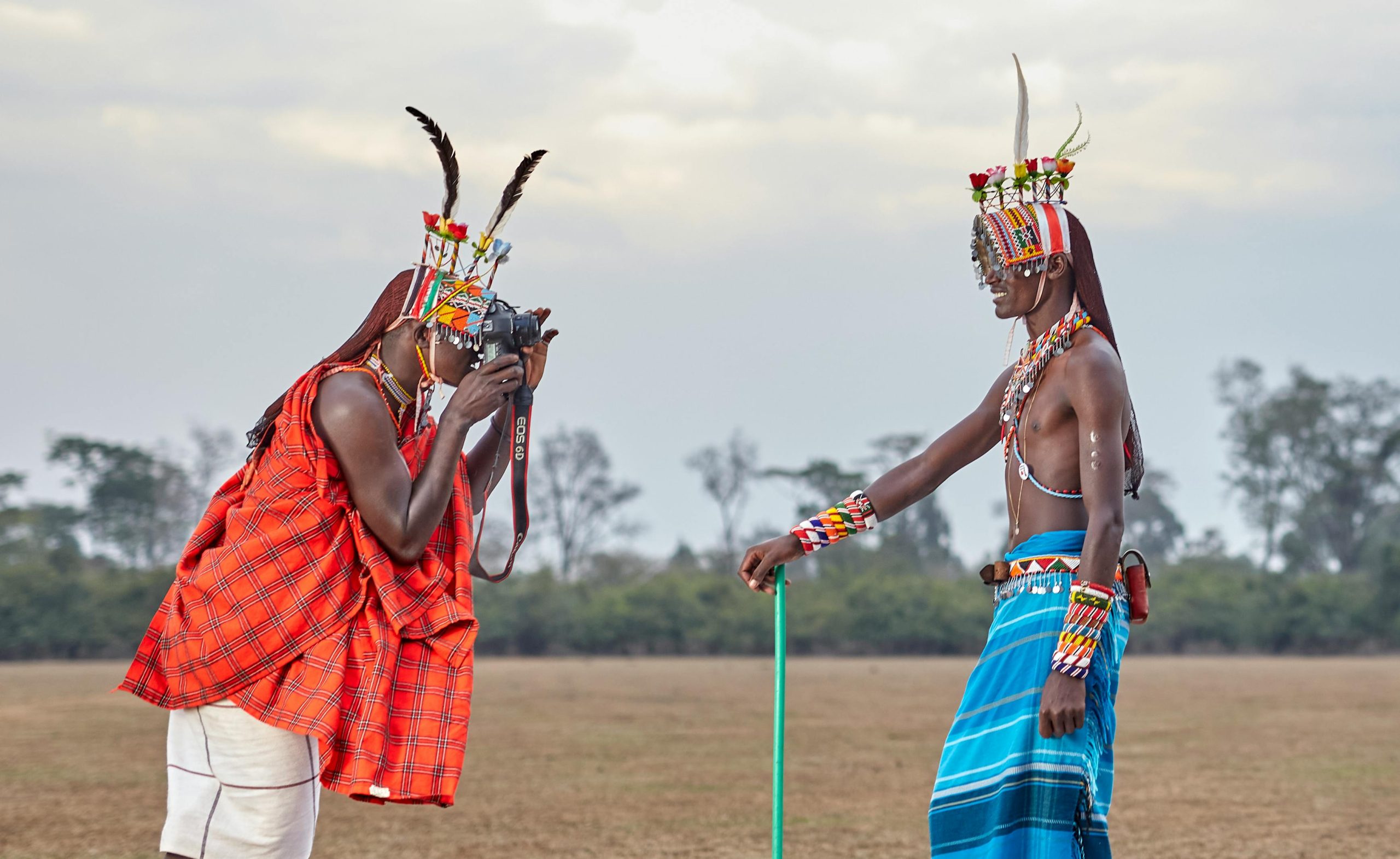
8. Accommodations and Services
Rwenzori Mountains:
- Huts and Campsites: Trekkers typically stay in basic huts or designated campsites along the trekking routes. Huts provide shelter and a place to sleep, while campsites require trekkers to bring their own tents.
- Lodges: Before and after the trek, accommodation options both mid-range and luxurious in towns like Kasese include lodges and guesthouses offering more comfort and amenities.
- Tour Operators: Many treks are organized by local tour operators who provide guides, porters, and arrange accommodations on the mountain.
Mount Kilimanjaro:
- Huts (Marangu Route): The Marangu Route is the only route with hut accommodations. These huts provide basic shelter with bunk beds.
- Campsites: On all other routes, trekkers camp in designated areas. Tour operators typically provide tents, sleeping mats, and sometimes dining tents.
- Pre-Trek Accommodation: Towns like Moshi and Arusha offer a wide range of accommodations, from budget friendly hotels to luxury lodges, where trekkers can rest before and after their climb.
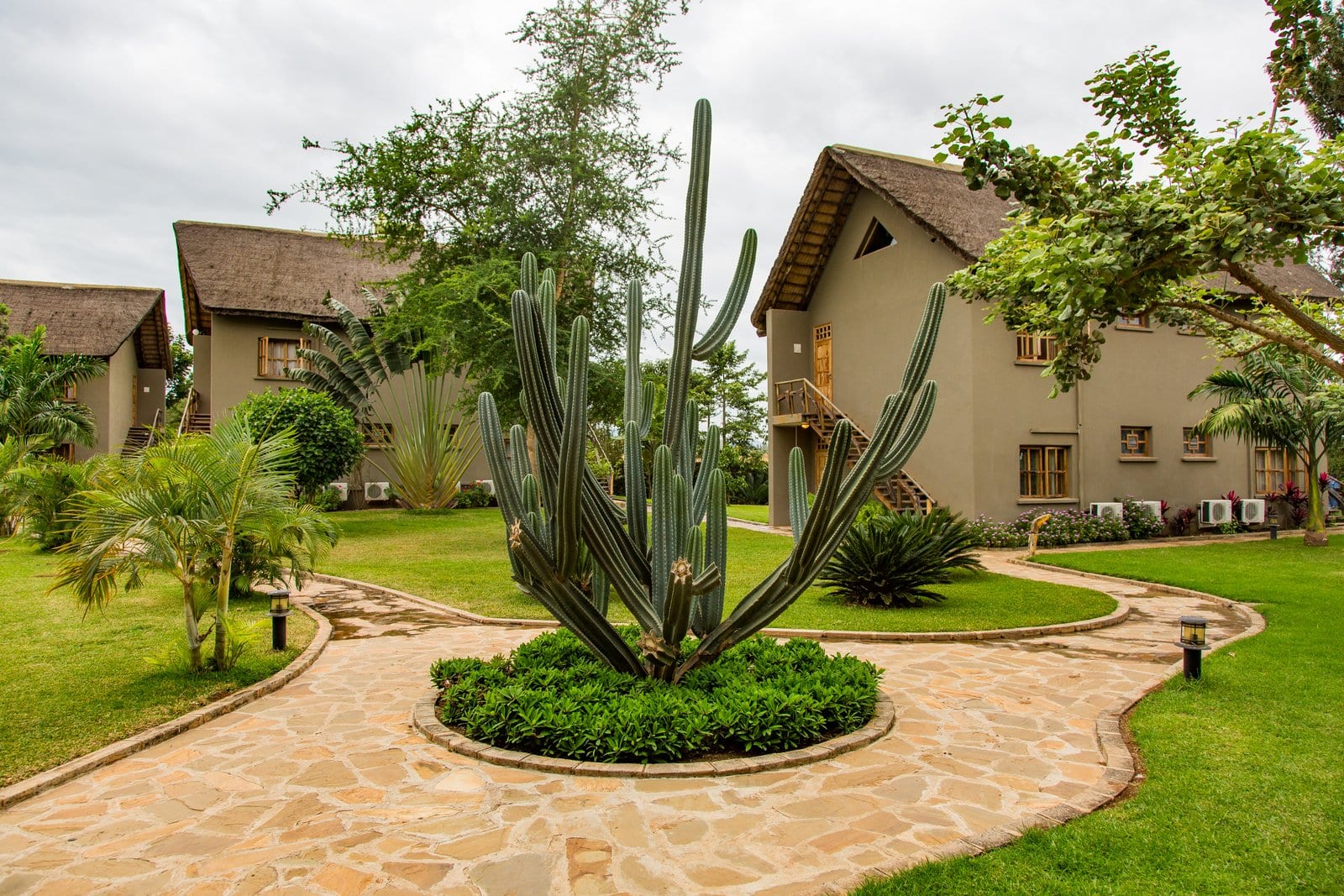
9. Safety Tips
Altitude Sickness:
- Symptoms: Watch for signs of altitude sickness, including headaches, nausea, and fatigue. Early symptoms should be addressed promptly to prevent severe altitude sickness.
- Prevention: Ascend slowly, take acclimatization days, and stay hydrated. Consider medications like acetazolamide (Diamox) if prescribed by a doctor.
- Response: If symptoms worsen, descend to a lower altitude immediately.
Weather conditions:
- Monitor Weather Forecasts: Stay informed about the weather conditions and be prepared for sudden changes, especially near the summit.
- Clothing: Wear appropriate clothing to protect against cold, wind, and rain. Layering is key to regulating body temperature.
- Rainy Season Caution: Avoid trekking during the peak rainy seasons when trails are muddy and visibility is poor.
Wildlife and Environmental Considerations:
- Wildlife Awareness (Rwenzori): Be aware of wildlife in the Rwenzori Mountains, such as monkeys and forest elephants. Follow your guide’s instructions for safety.
- Leave No Trace: Follow the Leave No Trace principles by carrying out all waste, staying on designated trails, and minimizing your impact on the environment.

10. FAQs
Q: How difficult is it to trek in the Rwenzori and Kilimanjaro mountains?
- A: The difficulty varies depending on the route and your fitness level. Rwenzori treks tend to be more challenging due to the remote terrain and weather conditions. Kilimanjaro offers routes for different experience levels, with some being easier and more accessible than others.
Q: Do I need a guide?
- A: Yes, both the Rwenzori and Kilimanjaro mountains require trekkers to be accompanied by licensed guides. This is mandatory for safety and environmental protection.
Q: How long does it take to trek Kilimanjaro and Rwenzori?
- A: Kilimanjaro treks typically take 5-9 days depending on the route chosen, while Rwenzori treks can take 7-10 days. The duration depends on the route, acclimatization needs, and your trekking pace.
Q: What kind of permits do I need?
- A: Both mountains require permits, which are typically included in the cost of a guided trek. For Kilimanjaro, permits are issued by the Tanzania National Parks Authority (TANAPA), and for Rwenzori, they are issued by the Uganda Wildlife Authority (UWA).
Q: What are the accommodation options on the mountains?
- A: On Kilimanjaro, accommodation depends on the route. The Marangu Route offers hut accommodations, while other routes involve camping. In the Rwenzori Mountains, trekkers stay in basic huts or campsites along the trails.
A detailed FAQ list if found on this page
11. Conclusion
Trekking the Rwenzori and Kilimanjaro mountains offers an unparalleled adventure through some of Africa’s most stunning landscapes. Whether you’re drawn to the remote wilderness of the Rwenzori or the iconic summit of Kilimanjaro, these treks provide challenges, rewards, and memories that will last a lifetime. With proper preparation, guided support, and respect for the environment, your trekking journey will be both safe and fulfilling.
